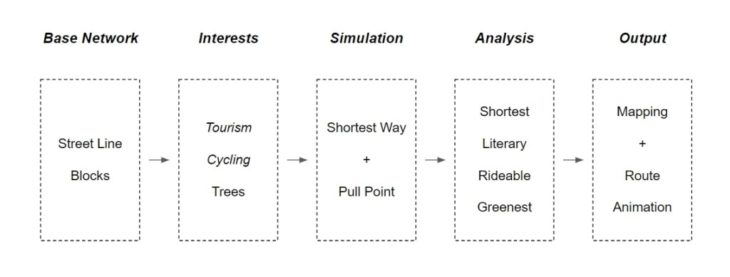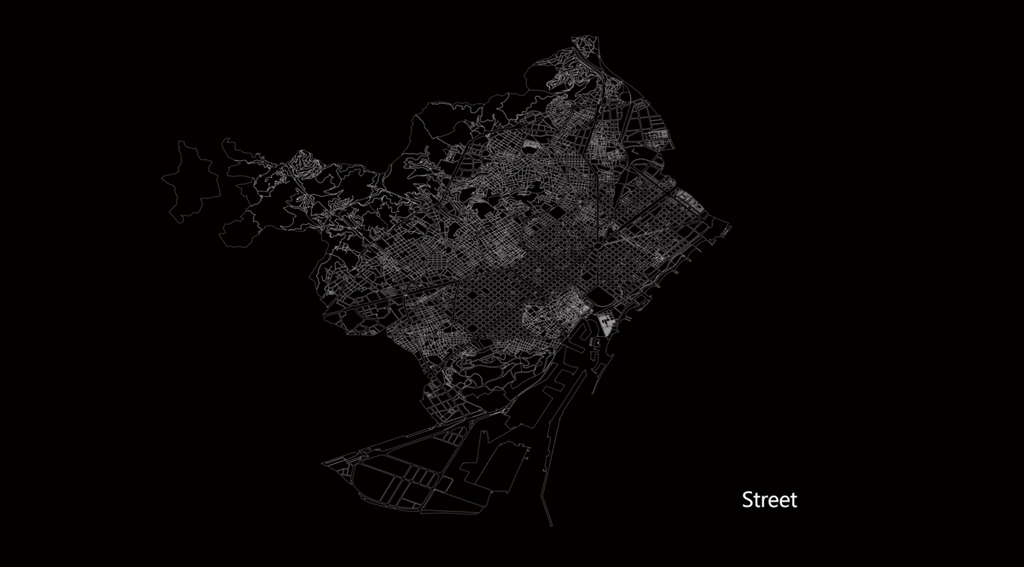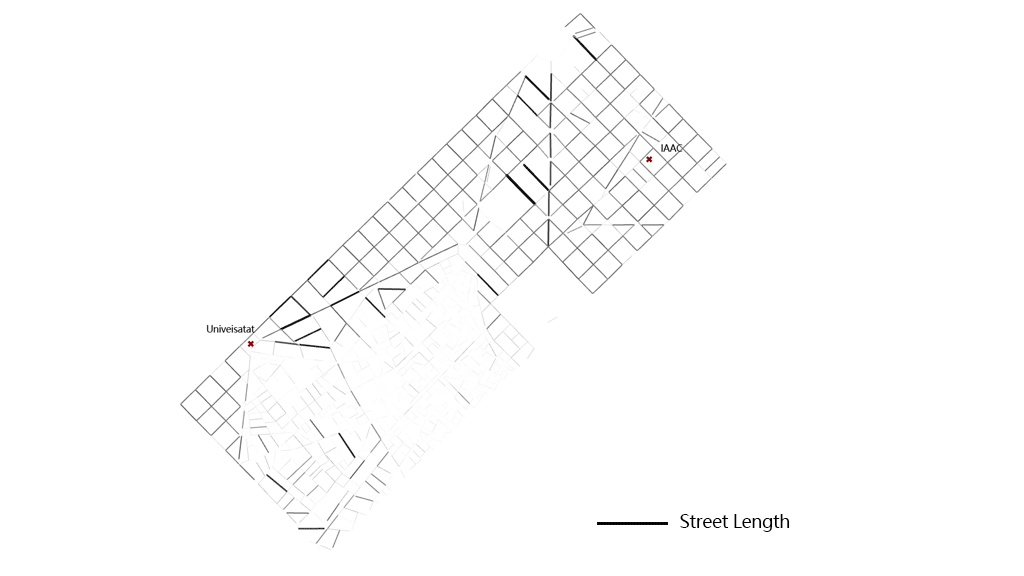// Introduction
Barcelona has the most unique urban buildings and streets in the world, attracting people from all over the world to study and live in this city. At the same time, Barcelona has developed light traffic, which is very suitable for walking and cycling to experience the entire city.
However, for such uniform streets and characteristic buildings scattered throughout the city, if I want to experience the differences of different streets more, and meet more beautiful buildings unexpectedly, how can I arrange my own travel mode?
// Methodology
- Mapping the City_ Street Morphology and Street Environment
- Mapping the Interests_ Tourism and Cycling
- Analysis the Streets_ Street Length, Tourism, Rideability, Greenness
- Find a Route_ Different Special Routes for Different Cycling and Tourism Needs
// Pseudocode

// Mapping the City

From the visualization, we can clearly see that Barcelona’s attractions are concentrated in the old city and its surroundings. Bicycle lanes are scattered throughout the city but the continuity is not good. The streets of Barcelona’s extension area are better greened.
// Analysis the Streets

By zooming in and comparing the transition area between the old urban area and the expansion area, we find that the old urban area has shorter roads, more sightseeing value, lower cycling continuity, and worse street greening.
// Find a Route

By simulating and analyzing different routes from Universitat station in the old city to IAAC, we can get the shortest route that is the most friendly for walking, the most friendly cultural route for sightseeing, the most friendly cycling route for micro mobility, and the green route with the most trees. With this geographic data analysis and animation process, we can find different special routes for different cycling and tourism needs.
//Data Sources
Open Data BCN, Quick OSM
BCN Cycling Tourism is a project of IAAC, Institute for Advanced Architecture of Catalonia developed in the Master in City & Technology 2021/22 by Students: Can Xu , and Faculty: Eugenio Bettucchi and Iacopo Neri